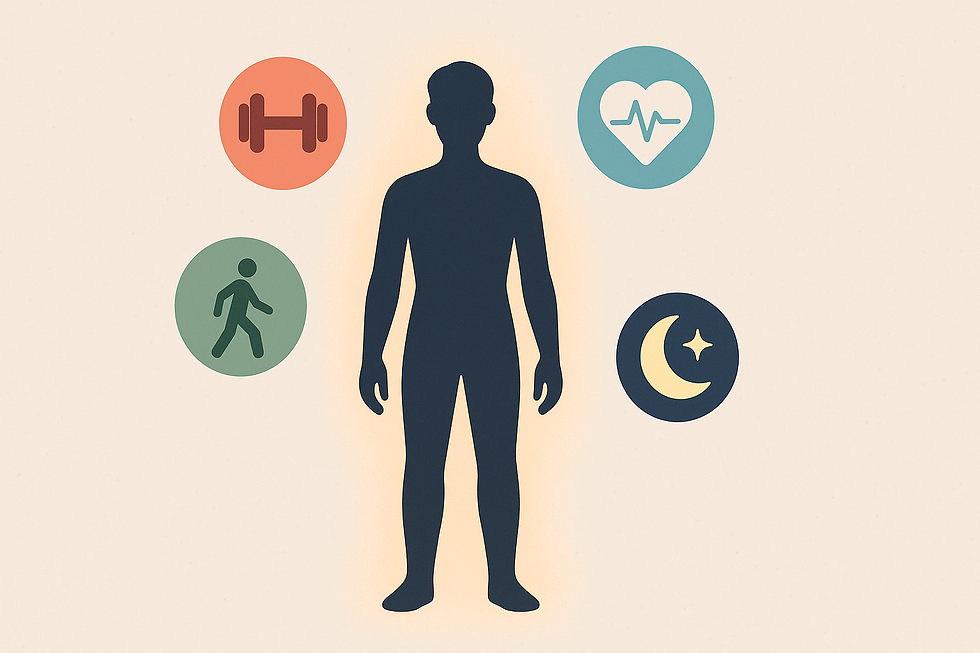Movement & Longevity: Why How You Move Matters More Than How Much
- Shideh Chinichian
- Aug 23
- 2 min read

“How much exercise should I do, doctor?”
This is one of the most common questions I hear as a physician. And while the standard advice — “30 minutes a day” — isn’t wrong, it’s only part of the story.
Longevity, healthy aging, and inflammation control aren’t just about how long you move. They’re about how you move — and how consistently you build it into your life.
1. Strength Training: Your Longevity Insurance
Strength training isn’t just for athletes. It:
Protects bone density and reduces osteoporosis risk
Preserves lean muscle, which is directly tied to metabolism and blood sugar control
Supports hormone balance and mental health
Research shows muscle is one of the strongest predictors of resilience as we age. Stronger people recover faster from illness, surgery, and injury
2. NEAT: The Most Underrated Movement
NEAT stands for Non-Exercise Activity Thermogenesis — the energy you burn outside of workouts (walking, gardening, house chores, standing).
Studies show NEAT can account for 15–30% of daily calorie burn, and more importantly, it lowers inflammation, improves insulin sensitivity, and supports cardiovascular health (Levine, Mayo Clin Proc 2002).
Translation? Your daily walks may matter more than your gym time.
3. Cardio: A Boost for Heart and Brain Health
Cardio is still essential, but it doesn’t need to mean hours on a treadmill. Moderate activity like brisk walking, cycling, or swimming:
Strengthens the heart and lungs
Improves blood flow to the brain
Supports mitochondrial health
Excessive cardio, however, can increase cortisol and strain joints — especially if recovery is lacking.
4. Recovery: The Missing Piece
Movement without recovery is stress, not resilience.
Sleep is critical for muscle repair and hormone balance
Mobility and stretching keep joints healthy
Rest days lower inflammation and prevent overtraining
Recovery is not optional. It is part of training.
5. Personalization Matters
The best movement plan depends on you.
A woman in perimenopause may need more strength training to protect bone and metabolism
A cancer survivor may benefit most from walking and mobility work at first, then gradual resistance
A stressed executive may need recovery and restorative movement more than another hour of high-intensity training
There is no one-size-fits-all prescription. There is only what’s right for your body, your season of life, and your goals.
The Personalized Bottom Line
Movement is medicine — but only when it fits you, your life, and your season of health.
Three Things You Can Do Now
Strength train at least twice a week.
Walk daily and add movement into everyday life.
Protect recovery with consistent sleep and mobility.




